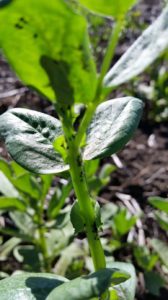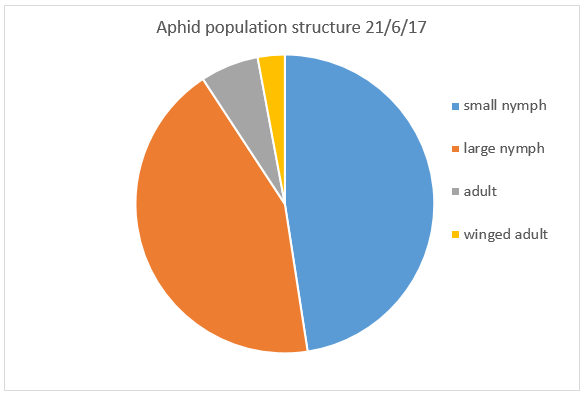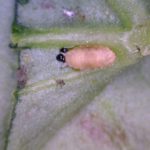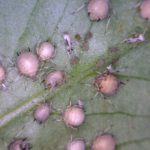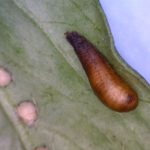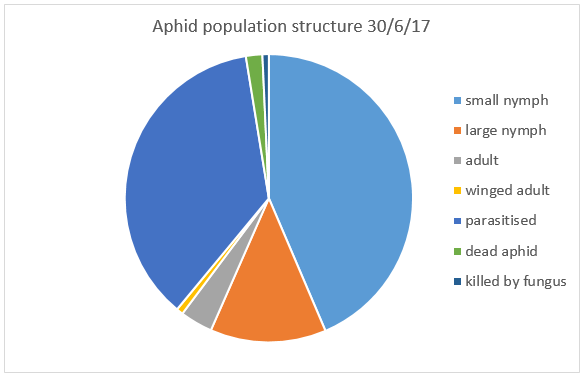Of importance to agronomists is how pest populations are changing over time and the likely impact predators will have on the pest population. Predator and parasitoid activity can be difficult to assess under field conditions, particularly the rate at which beneficials can find pest species. In this research, sentinel prey were used to gauge the level of natural predator and parasitoid activity against cowpea aphids.
The plants were grown in the glasshouse before being infested with sentinel prey, in this case cowpea aphids. The plants were then placed out into a field of faba beans that had been naturally infested with aphids for several weeks. The structure of the aphid populations present on the sentinel plants prior to field exposure was recorded (Figure 1). After 48 hours, the plants were collected, and the presence of predators noted. Parasitism levels were recorded seven days after collection (sufficient time for immature parasitoids to develop).
Both predators and parasitoids rapidly located the sentinel plants and helped contain aphid population growth. Aphid populations on control plants that stayed in the laboratory (with no exposure to natural enemies and at a similar temperature to field conditions) grew 24% over the 48 hour period, while the aphid population levels on the sentinel plants remained the same.
On 12 of the 16 sentinel plants (75%) there were one or more juvenile stages of predators. The predators included;
- White collared ladybird larvae (2)
- Minute two spotted ladybird larva (1)
- Brown lacewing larvae (10)
- Hoverfly eggs/pupae
- Silverfly pupae (5)
- Silverfly pupa (Leucopis sp.)
- Parasitised aphids (mummies) by the wasp Aphidius colemani
- Hoverfly pupa
After 7 days in the lab, 56% of the original sentinel aphid population was parasitised, however there was significant recruitment of nymphs during this period (Figure 2).
Conclusion
Using sentinel prey demonstrated that predators can quickly seek out aphids and provide natural control and that aphid parasitoids were able to rapidly locate and parasitise a significant proportion of the aphid population. Where fourth instar and adult aphids were parasitised they did produce some offspring prior to being killed by the parasitoid. In the laboratory, these nymphs remained free from predation and parasitism, however in a field situation you would expect that ongoing natural enemy activity would impact this next generation also.
Agronomists can adopt a similar principle to the sentinel prey method, by marking a few plants, estimating pest population size, then returning to the same plant over several weeks to observe if changes have occurred and if any aphids have become mummified (parasitised).

